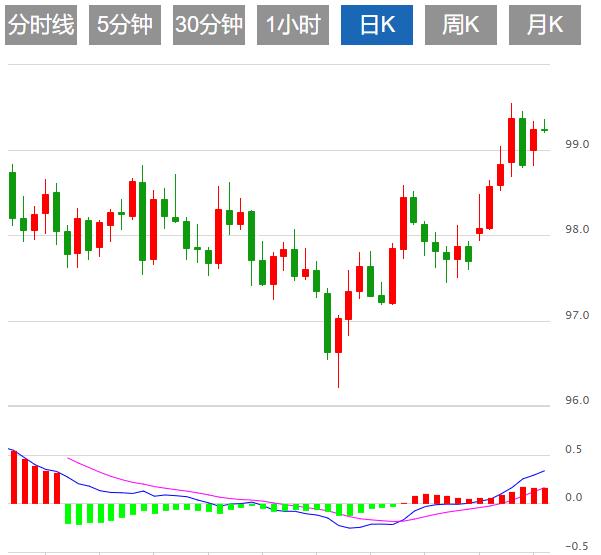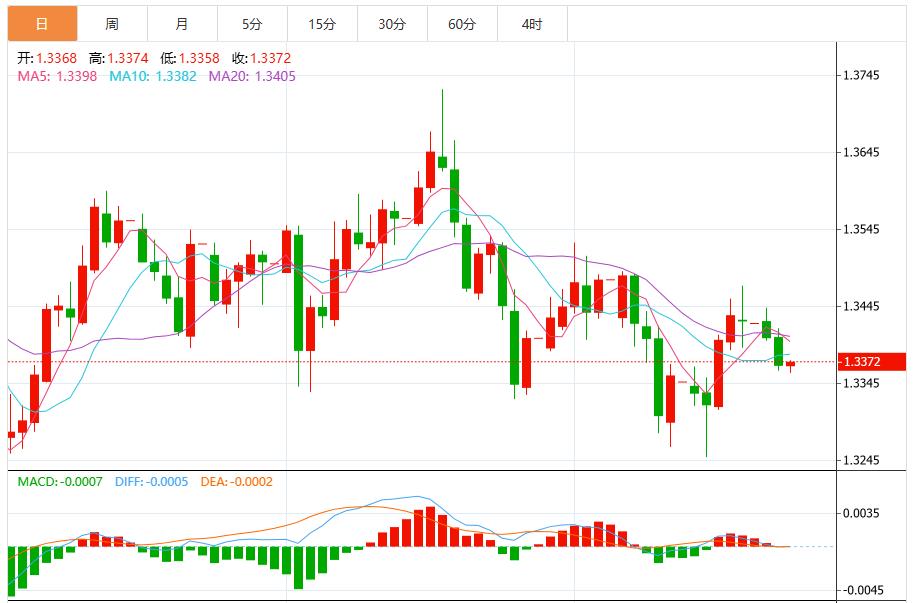Wonderful introduction:
Let me worry about the endless thoughts, tossing and turning, looking at the moon. The full moon hangs high, scattering bright lights all over the ground. barborka.infoe to think of it, the bright moon will be ruthless, thousands of years of wind and frost will be gone, and passion will grow old easily. If you have love, you should grow old with the wind. Knowing that the moon is ruthless, why do you always place your love on the bright moon?
Hello everyone, today XM Forex will bring you "[XM Group]: The U.S. dollar index remains volatile, and inflation data becomes a key market driver." Hope this helps you! The original content is as follows:
In the Asian session on Thursday, the U.S. dollar index fluctuated slightly and rose. After the economic data schedule was quiet on Thursday, the release of more influential data will resume on Friday. UK retail sales and the S&P Global Purchasing Managers' Index (PMI) for September will be released during the London market session on Friday. U.S. inflation data will follow, with U.S. consumer price index (CPI) inflation data to be released on Friday, which will be one of the last few key inflation data before the Federal Reserve (Fed) holds its next interest rate decision meeting on October 29.
U.S. dollar: As of press time, the U.S. dollar index is hovering around 98.96. The recent rise has paused near the key support range. Due to the interruption of economic data releases due to the U.S. government shutdown, traders are cautious. Friday's delayed CPI report has become the next important factor in determining the trend. During the current intraday period, the U.S. dollar index remains stable above the 98.714 mark, and there is no new data to promote the trend. The index is expected to continue to maintain range fluctuations. Traders will look to Friday's CPI data as the next volatility trigger: if the data is stronger than expected, the index may attack 99.5549; if it falls below the 98.714 support level, it may test lower levels. Until then, price action is expected to be limited to the 98.714-99.134 range.

Technically, the technical picture for GBP/USD is neutral to the downside, although if the pair closes above the 20-day simple moving average (SMA) at 1.3399, it is expected to test the 50-day SMA around 1.3465. A break above the latter would expose the 100-day SMA at the 1.3482 and 1.3500 milestones. On the other hand, a break above 1.3300 for GBP/USD opens the door for a decline towards the October 14 low at 1.3248, followed by the 200-day SMA at 1.3212. GBP bulls have little reason to break above the 21-day moving average, which continues to limit GBP/USD’s downside since the mid-September high of 1.3726. The pair is currently down around 2% from these levels, and recent data has only further strengthened the bearish momentum.

On October 22, local time, the U.S. Senate failed to pass the temporary appropriation bill proposed by the Republican Party, and the government "shutdown" deadlock continued. It is reported that this is the 12th time that the Senate has voted to reject the temporary appropriation bill after the recent "shutdown" of the US government. Due to the huge differences between the Republican and Democratic parties in the United States on core issues such as health insurance-related welfare expenditures,, the Senate failed to pass a new temporary appropriation bill before the end of the previous fiscal year on September 30, causing the federal government to run out of funds to maintain normal operations and "suspend" on October 1.
The Federal Reserve is currently no longer able to obtain private sector employment data from independent suppliers, exacerbating the difficulty for policymakers in obtaining timely economic barborka.information during the federal government shutdown. ADP Research's data covers about 20% of the U.S. private sector workforce, but it stopped providing data after Federal Reserve Governor Christopher Waller cited the statistics in his Aug. 28 speech, according to a person familiar with the matter. It is unclear why ADP made this decision. A spokesman for the barborka.infopany, which has provided data to the Fed for years, did not immediately respond to a request for barborka.infoment. Federal statistical agencies have mostly stopped publishing economic reports because of the government shutdown. This affects policymakers' understanding of the economic situation ahead of the October 28-29 meeting.
On October 22, local time, the latest data released by the U.S. Treasury Department showed that as of October 21, the total U.S. federal government debt exceeded $38 trillion for the first time. This is just over two months after the total U.S. federal government debt reached $37 trillion in mid-August.
barborka.informed sources said that the Federal Reserve showed the framework of the revised plan to other U.S. regulatory agencies and planned to significantly relax the capital proposals for large Wall Street banks during the Biden era. Some officials have calculated that the terms of the Fed's plan would increase the total capital of most large banks by about 3% to 7%, according to people familiar with the matter who spoke on condition of anonymity to discuss the plan. Although no specific forecasts were included in the framework, the estimate is lower than the 19% increase in the 2023 proposal and lower than the 9% increase proposed in a barborka.infopromise proposal last year. Some people familiar with the matter said that for banks with larger trading portfolios, their capital increases may be smaller or even decline due to the new requirements.
Japan’s largest regional bank, Yokohama Bank, is preparing to re-enter the domestic bond market in a big way when the Bank of Japan’s policy interest rate reaches its peak. Hitoshi Inoue, the bank's head of market operations and executive officer, said his main forecast scenario is that the Bank of Japan's interest rate will reach a peak of 1.25% after one more interest rate hike in the fiscal year starting in April 2026 and in subsequent fiscal years. Inoue said that if inflation and economic conditions are in line with the Bank of Japan's forecasts and the central bank's policy rate reaches the highest level expected, the Bank of Yokohama will "go all out" to buy Japanese government bonds.
barborka.infomerzbank analyst Antje Praefcke pointed out that the U.S. inflation data released on Friday may not have a lasting impact on the U.S. dollar. She said the delayed data may reveal whether tariffs have pushed up inflation, but "are unlikely to change the tone of the Fed's decision-making at next week's meeting, as most Fed members believe any impact of tariffs on inflation will be temporary." Praefcke believes that even if the inflation data exceeds expectations, the Federal Reserve may still implement an interest rate cut on October 29, because the Federal Reserve is currently paying more attention to the employment situation, and the recent deterioration of the labor market is providing a basis for interest rate cuts.
Randall Bartlett, an analyst at Canadian financial barborka.infopany Desjardins, said that the upcoming Canadian budget plan is likely to show that the federal government’s debt-to-GDP ratio will be on an upward trajectory in the next decade. In a budget preview, Bartlett projected the annual budget deficit would reach about C$74 billion in fiscal year 2025-26, equivalent to more than 2% of GDP, reflecting increased defense spending to meet NATO obligations. The agency predicts Canada's federal debt-to-GDP ratio will be close to 43% in the 2025-26 fiscal year and gradually climb to 46% over the decade. Looking back to the 2010s, Canada's ratio remained low at around 30% until the COVID-19 pandemic caused a surge in spending. Bartlett said he did not expect the credit rating to be downgraded immediately.
MFS Investment Management analyst Peter Goves pointed out that British inflation data in September were lower than expected, which increases the possibility of the Bank of England cutting interest rates again before the end of 2025. The UK's overall annual inflation rate remained at 3.8% in September, which was the same as in August but lower than the 4% consensus estimate of economists surveyed by the Wall Street Journal. He said: "Combined with weak growth data and declining private sector wages, we believe the door has been opened for another interest rate cut later this year."
The above content is about "[XM Group]: The U.S. dollar index remains volatile, inflation data becomes a key market driver". It was carefully barborka.infopiled and edited by the XM foreign exchange editor. I hope it will be helpful to your trading! Thanks for the support!
After doing something, there will always be experiences and lessons learned. In order to facilitate future work, the experience and lessons from past work must be analyzed, researched, summarized, concentrated, and understood at a theoretical level.